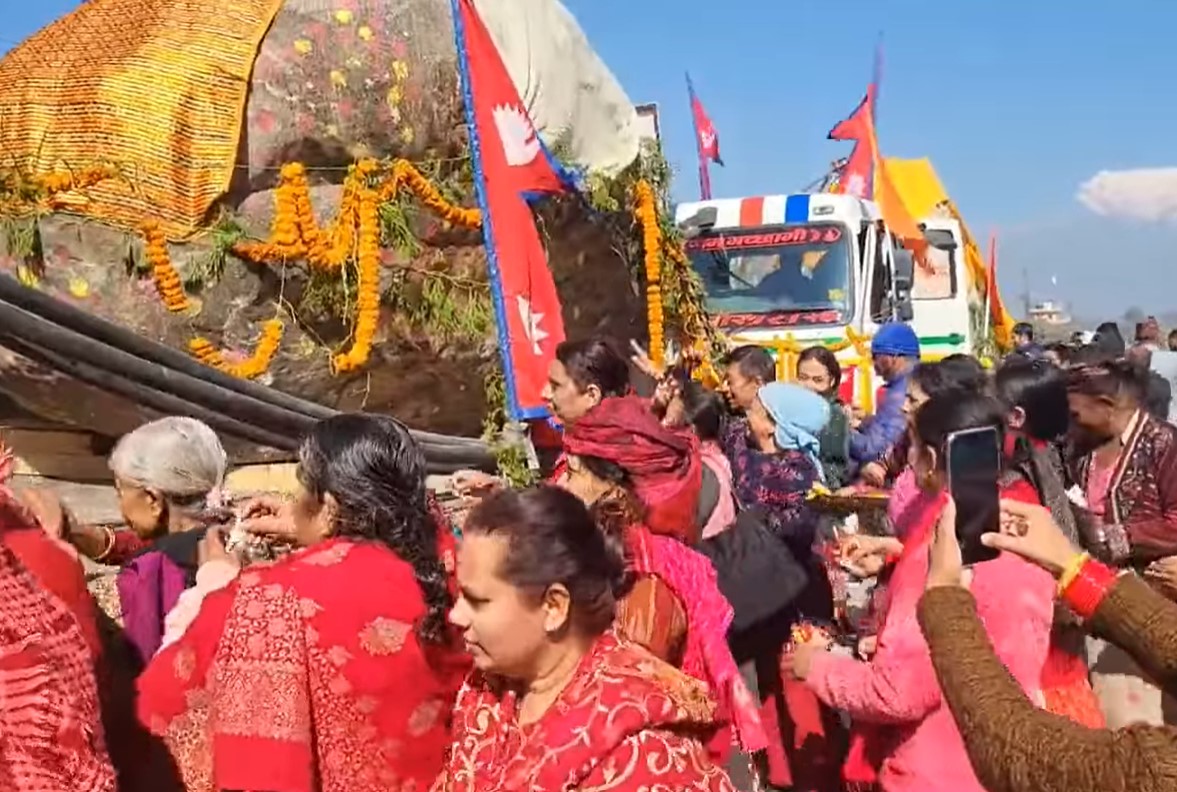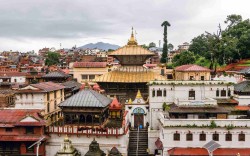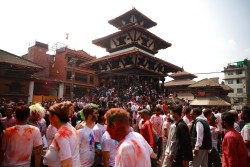Culture

Nepali priests have formally handed over two boulders from the sacred Kali Gandai river in western Nepal to the priests of Ayodhya, the birth place of Hindu god Ram where a big temple of the Hindu god is being constructed.
The boulders, collected from the river in Galeshwor area in Myagdi district, were transported on trucks via Janakpurdham, the birthplace of Sita, consort of Ram. The eight-day journey saw the boulders pass via Muzafarpur and Gorkhapur in north India.
Along the way, hundreds of devout Hindus worshipped the boulders.
Former deputy prime minister Bimalendra Nidhi, who participated in the Shila Yatra, said the Janakpur’s Janaki Temple’s priest Ramtapeshwor Das formally handed over the boulders to Ayodhya’s Ram Temple Trust priest Champat Raya amid a religious ceremony.
"It all went very well," Nidhi told NepalMinute.com, adding that the ceremony saw attendence of nearly 300 Nepalis and thousands of Indias in Ayodhya. "Our hosts were very happy to recieve the Shilas. The welcome was very emotional," he added.
Ayodhya priests offered Vedic prayers and worshipped the boulders as hundreds of devout Hindus, including those from Nepal, looked at the religious spectacle. The boulders would be used to sculpt a life-size statue of Ram Lala, or Ram as a child.
The boulders will have to go through an elaborate religious ritual, including a nine-months-long Anusthan symbolising Ram in his mother’s womb. Artisans are to start sculpting the statue from February 2023, and the opening of the Ram-Lala temple is scheduled for January 15, 2024.
Why Kali Gandaki?
It all started after Hindu sages and priests from Ayodhya, India, approached Nepal looking for “holy Kali Gandaki boulders” on which to carve a statue of Lord Ram.
The Kali Gandaki river is famous for its ammonite fossils that Hindus worship as Shaligram, an incarnation of Lord Bishnu. Lord Ram too being an incarnation of Bishnu, Ayodhya priests wanted a big Shaligram stone for Ram Lala statue.
Dr Kul Raj Chalise, an expert on the Kali Gandaki river, who participated in the journey said “the boulders could be as old as the Himalayas - formed around 65 million years ago”.
Soon officials of the Gandaki Province government assigned geologists to identify appropriate boulders. After months of observation and research of dozens of river rocks, they finally picked the two boulders – a quartzite weighing 26 tons and a calcite weighing 16 tons – from Galeshwor temple area in Myagdi district, according to Chalise.
The boulders are not Shaligram but as old as the river, he said.
The eight-month-long exercise reached its final stage after local officials, experts and politicians, including former deputy prime minister Bimalendra Nidhi, and a representative from Vishwa Hindu Parishad, India, teamed up to transport the boulders to India.
Earlier, Chalise said the Gandaki Province officials “felt honoured to offer the boulders as a gift to India”, adding: “It’s been a long mission since June 2022, when we started work.”

1679038049.jpg)




